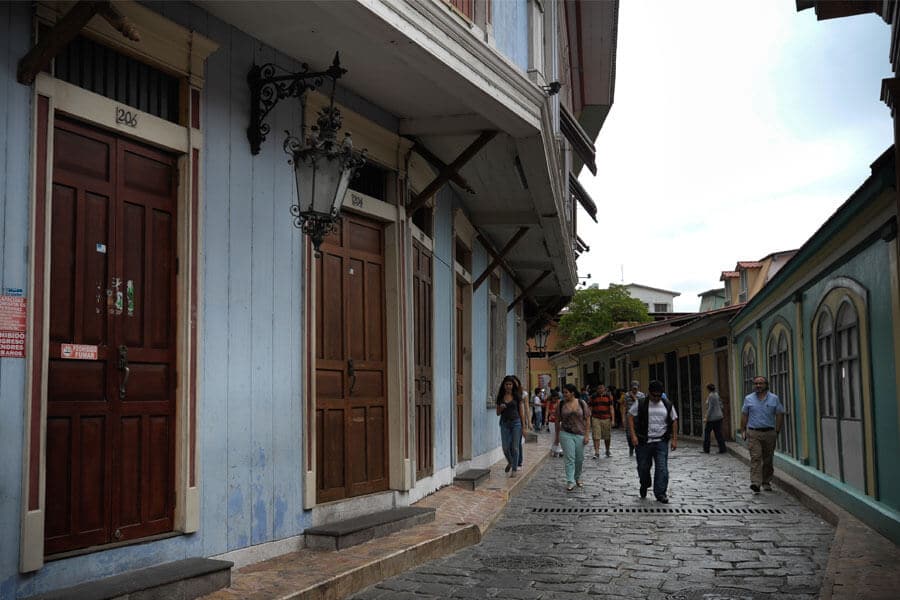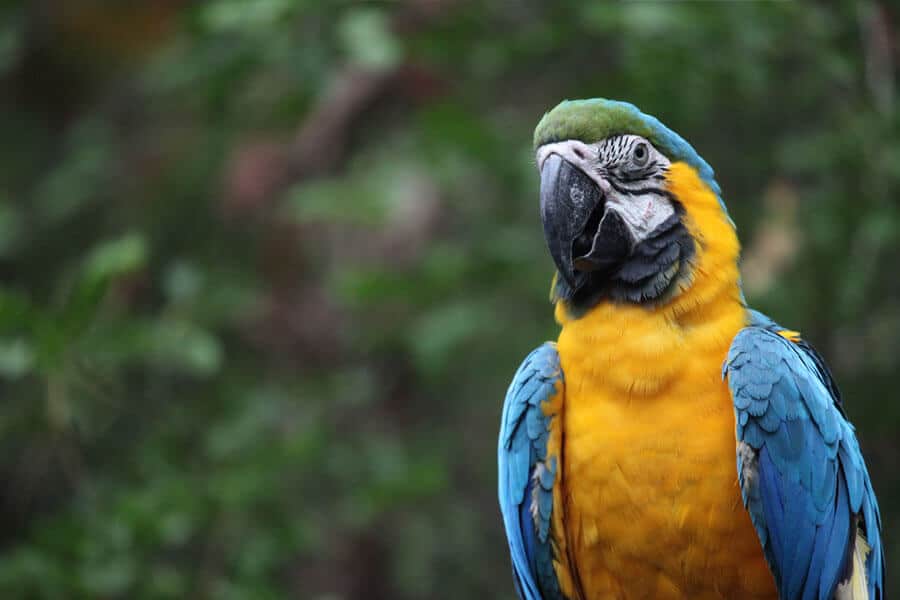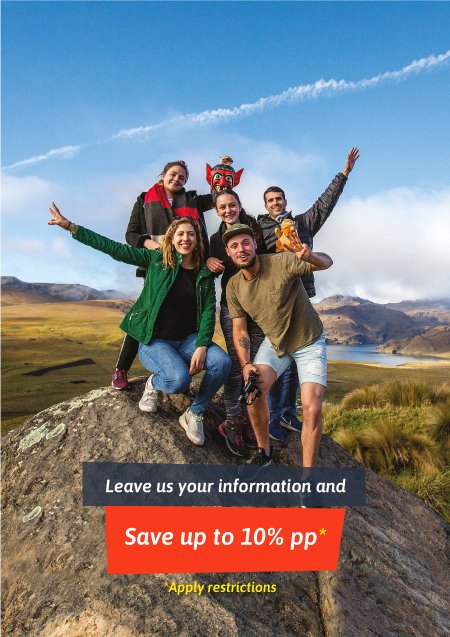To address the many inquiries we receive about things to do in Guayaquil, we’ve prepared the following blog on how to use your time during your 24, 42 or 72 hour visit of this gloriously misunderstood city.
As the largest city along the Ecuadorian coast (and in Ecuador, for that matter), Guayaquil has become the logical jumping off point for travelers headed to the Galápagos Islands. If you’re headed to the Galapagos, no question about it, you will be stopping through Guayaquil. And, even if you’re not headed to the Islands, Guayaquil is an impressive city to visit and a gateway to the best of Ecuador’s coastline.
Will you be travelling to Guayaquil by land? The Wanderbus offers a number of passes from Quito, Cuenca and Baños to Guayaquil with convenient hop on and hop off locations at each stop along the way.
24 hours: Must see in Guayaquil
You have 24 hours to visit all the must-see sights in Guayaquil and immerse yourself in its culture. Go!
Honestly, for a travel blogger, I’m pretty lazy about my traveling, especially when it involves tropical whether, as in Guayaquil. As soon as the temperature rises above 25C (77F) and humidity hits 60%, I (slowly) morph into a sloth, my spirit animal.
24 hours? Hot, humid? Sigh. Let’s just have brunch and watch TV, am I right? I know there are some of you out there that can relate, but for the rest of you hyper-active travelers, here’s your 24 hour game plan in Guayaquil:
Parque Seminario
Do you like iguanas? If not, skip to the next activity.
Another one of my spirit animals is the iguana, which is why Parque Seminario, also known as Iguana Park, is at the top of my list.
This XIX century park and church is a worthwhile stopping point on your way through the city, especially if you need a break from the sun. While the park itself is charming with its artificial lagoon and tress, the real attraction is the hoards of green iguanas lounging in the grass and trees.
Observing these magnificent reptiles is a natural prelude to your Galapagos Island experience and is likely the first of many opportunities to take selfies with Ecuadorian wildlife.
Eat crab
If you’re allergic to shellfish, skip to the next activity. (Is this starting to feel like a choose-your-own-adventure story to you too?)
A trip to Ecuador isn’t complete without tasting some of its delicious traditional cuisine, which often includes fresh seafood straight from the Pacific. Each region along the Ecuadorian coast offers its own specialties. For instance, near Puerto Lopez you have to try ceviche and peanut-based dishes. And the encocados along the northern coast has placed Esmeraldas on the culinary map.
In Guayaquil, it’s crab, or cangrejo, in all its varieties, including arroz con cangrejo (crab and rice), cangrejo al ajillo (crab in garlic sauce), cangrejo relleno (stuffed crab), ensalada de cangrejo (crab salad), sopa de cangrejo (crab soup :). You can find places that serve crab along Calle 9, around the Malecón 2000 and Las Peñas neighborhood.
Wander through Las Peñas and up Cerro Santa Ana

The colorful neighborhood on a hill, las Peñas, attracts visitors far and wide and provides a glimpse into the Guayaquil’s cultural history. Though many tourists come here during the day, las Peñas is quite the nighttime destination as well, with numerous bars and clubs.
If you’re hydrated enough, ascend 444 steps for get a magnificent view of Guayaquil from Cerro Santa Ana.
Visit Malecón 2000
In a city as warm as Guayaquil, it’s only natural to feel drawn to the water. Río Guayas is a wide river running through the city, providing visitors respite from the often unrelenting heat. The boardwalk, Malecón 2000, was built in 1999, and is now a popular evening destination for residents and a wonderful spot to people watch, sip on a piña colada and enjoy the sunset.
Malecón 2000, which stretches for 2.5 km (1.5 mi.) along the river, is free to the public but only open from 18:00 to 22:00 during weekdays and 15:00 to 23:00 on weekends and holidays.
42 hours: know the city and its people
There are definitely more than enough things to do in Guayaquil than you could ever possibly do in 42 hours, but those extra 24 hours make all the difference. First things first, though: learn to pronounce the name Guayaquil.
According to travellingtuba on Tripadvisor, the right way to pronounce the name is: “Goo-why-ah-keel” (the goo-why melt together, and the G is soft). I have to say that’s a pretty decent phonetic pronunciation so let’s just leave it at that.
Now that we got that out of the way, we can proceed with Day 2 of your Guayaquil adventure. While many blogs out there might suggest a visit to Guayaquil’s cathedral, I prefer to avoid churches and would instead suggest a visit to:
Parque Histórico Guayaquil
Guayaquil’s Historic Park is located along the Guayas river, facing the airport. It stretches over 8 hectares and is a weekend destination for local families. There are a number of different areas in this park that are meant to recreate different elements of life in Guayaquil. There’s an area covering local architecture, one for traditions, urban and rural life.
The highlight of the park is definitely the outdoor area where you’ll find over 60 species of animals, many of which are rescues, including parrots, sloths and crocodiles.
Isla Santay
Though it’s very likely you’ll be exploring the incredible Galápagos Islands pretty soon, why not explore this island while you’re still on the mainland? Isla Santay is the landmass that can be seen across from Malecón 2000.
There are a number of ways to explore Isla Santay, a recreation area that was made to protect the surrounding mangrove ecosystem and the animals that live there. If you’re feeling low energy, you can always hop on a speedboat tour of the island. Alternatively, just cross the pedestrian bridges to the island on foot and, once there, walk, bike, canoe or kayak.
Presley Norton museum
Though a relatively small collection, the artefacts here, some dating back as far as 3000 BC, are impressive and well preserved. You’ll find pre-Columbian whistling vessels, stamps and more, most of which are remnants of the Valdivia (400 BC -1500 BC) and Machalilla (1500 BC – 800 BC) cultures that inhabited Ecuador’s coastal regions.
Built into a restored villa, this is an activity for those that can appreciate the beauty of historical objects and spaces.
72 hours: Guayaquil as a local
Another day in Guayaquil opens up endless new possibilities. Here are a couple of things to do in Guayaquil and nearby areas, given the extra time.
El Pantanal Zoo

I know, I know…a zoo? But before you judge too harshly, consider that this was originally a wildlife rescue center and now functions as a a breeding center for endangered animals that are later released into the wild. Rest assured, you’re not paying people to capture and confine wild animals.
For those among you that aren’t combining the Galápagos with the Amazon, this is an opportunity to see tropical wildlife that you likely won’t see on the Islands; the zoo houses over 100 species of flora and fauna from many parts of the mainland.
This is also a good option if you’re travelling with children and the entire visit will take about an hour and a half. Remember to take rain protection and water!
Cerro Blanco Forest
Another nearby destination for nature lovers and birdwatchers,Cerro Blanco Forest is a tropical dry forest reserve only half an hour from Guayaquil. There, you can see (or at least hear) howler monkeys and try to spot over 200 species of registered birds.
At Cerro Blanco Forest, you can explore four different trails of varying lengths and levels of difficulty. If you’re travelling there during rainy season, expect trails to be rough and muddy.
Playas
Playas, literally “Beaches”, is a relaxed coastal town 96 km (60 miles) from Guayaquil, and the closest beach to the city. It takes about an hour and half to get there by bus or car and is a good choice if you don’t feel like spending too much time in a large metropolis.
At Playas you can surf, go for a run, or just get a fresh ceviche and Pilsener, and still make it back to your hotel in Guayaquil. Alternatively, you can stay the night in Playas and head back to Guayaquil for your possible connecting flight.
To wrap things up
There’s really no shortage of things to do in Guayaquil. It’s a diverse metropolis and the home of nearly 2.5 million people, even larger than Ecuador’s capital, Quito. The suggestions above are only the tip of the iceberg; stay tuned for even more insider tips on things to do during a visit to Guayaquil!


